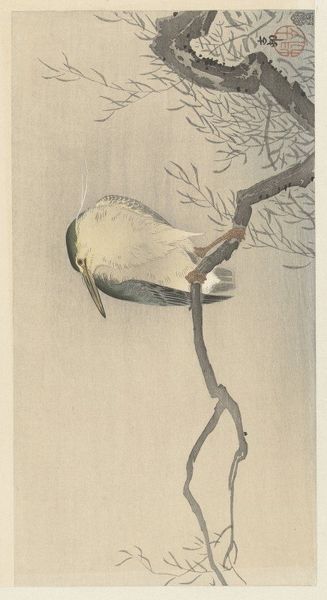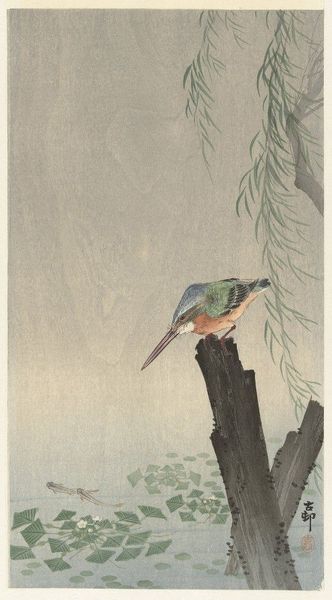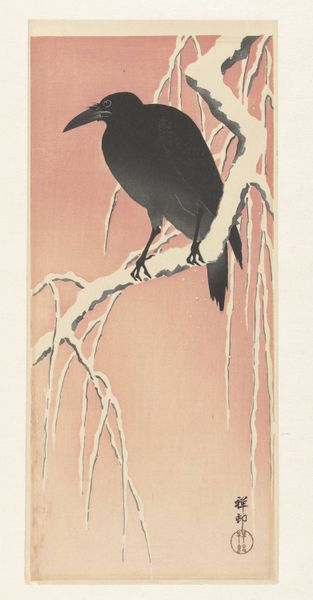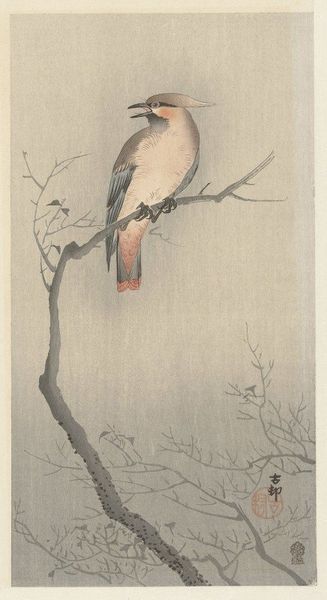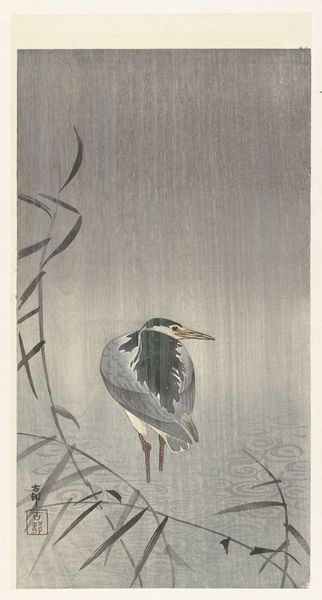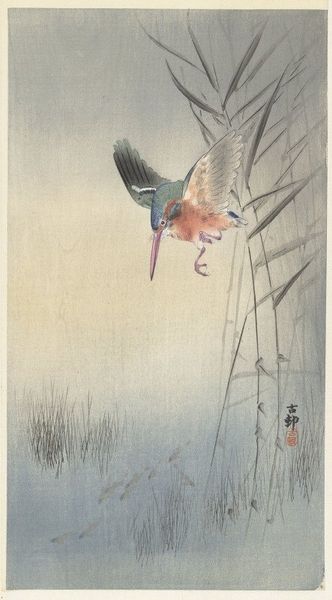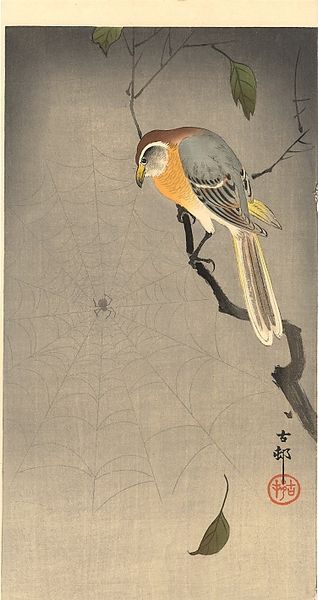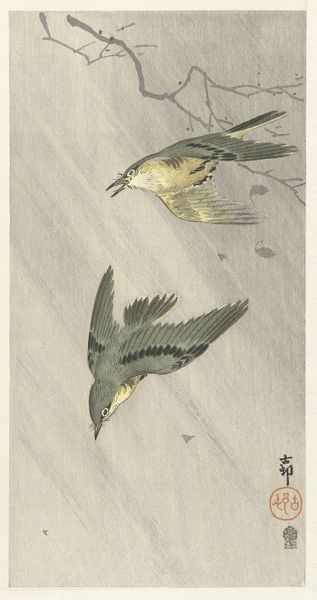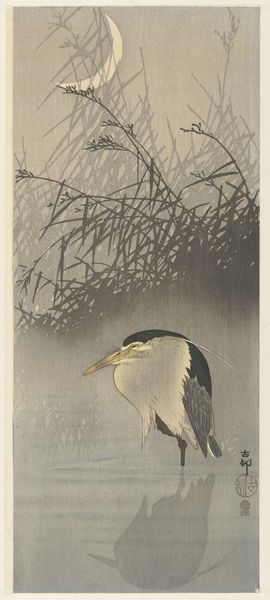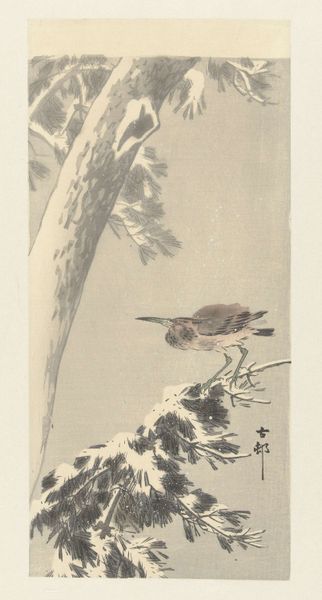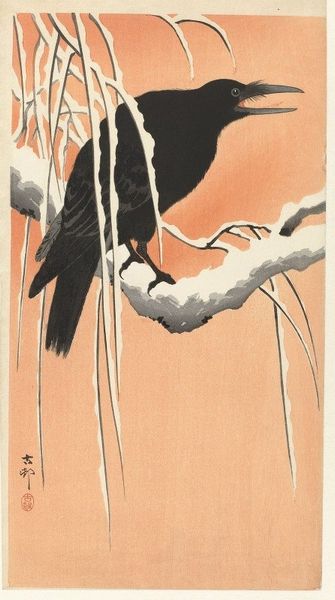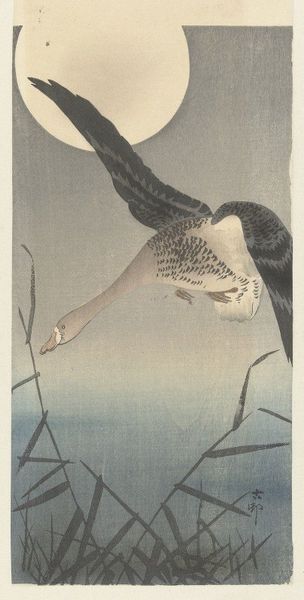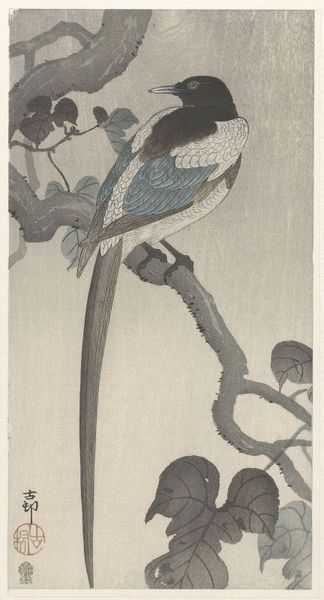
Copyright: Public Domain: Artvee
Editor: Here we have "Kwak on branch" a woodblock print by Ohara Koson, likely created sometime between 1900 and 1936. It’s a pretty simple composition, mostly greys, with this bird perched on a bare tree branch. What can you tell me about it? Curator: This piece, like many Ukiyo-e prints, demonstrates a fascinating tension between high art and mass production. Think about the collaborative labor involved: the artist's design, the wood carver's skill in translating that design onto the block, and the printer's expertise in applying the ink and pressure. The subtle gradations of gray, achieved through meticulous carving and printing techniques, point to incredible mastery of the medium. Consider also the social context—how such prints made art accessible to a wider audience beyond the elite. Editor: So, you are suggesting that, beyond the image itself, the *making* of the artwork is significant? Curator: Precisely! The very accessibility of these prints – the fact they were relatively inexpensive and widely distributed - challenges the traditional notion of the artwork as a unique, precious object. What does it mean that art could be both aesthetically refined and part of a wider system of commerce and consumption? Editor: I hadn't considered it that way. I was focused on the bird and its symbolic meaning. Curator: While symbolism certainly has its place, focusing on the materiality opens new avenues for understanding its impact. What do you think an examination of its production tells us about its value? Editor: I see what you mean. Considering it this way makes me think about how different that production method is compared to art today, and what gets lost, or gained, in those differences. It's like, the image becomes almost secondary to the social and material circumstances surrounding its creation and distribution. Curator: Exactly. The value isn’t inherent, but a product of its specific context of making, labor, and consumption. This perspective transforms our appreciation. Editor: I've never really thought about art like that before. This perspective changes everything!
Comments
No comments
Be the first to comment and join the conversation on the ultimate creative platform.
